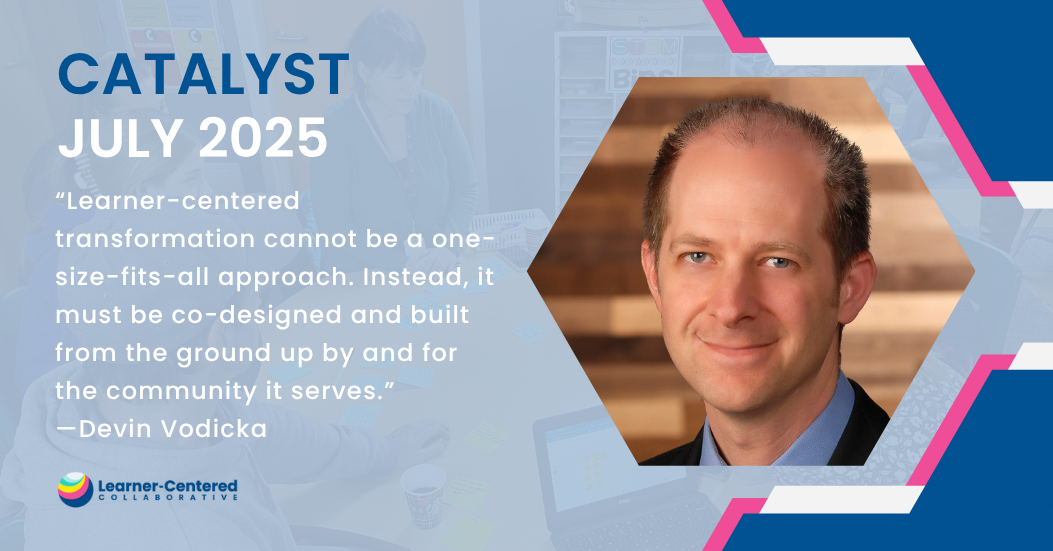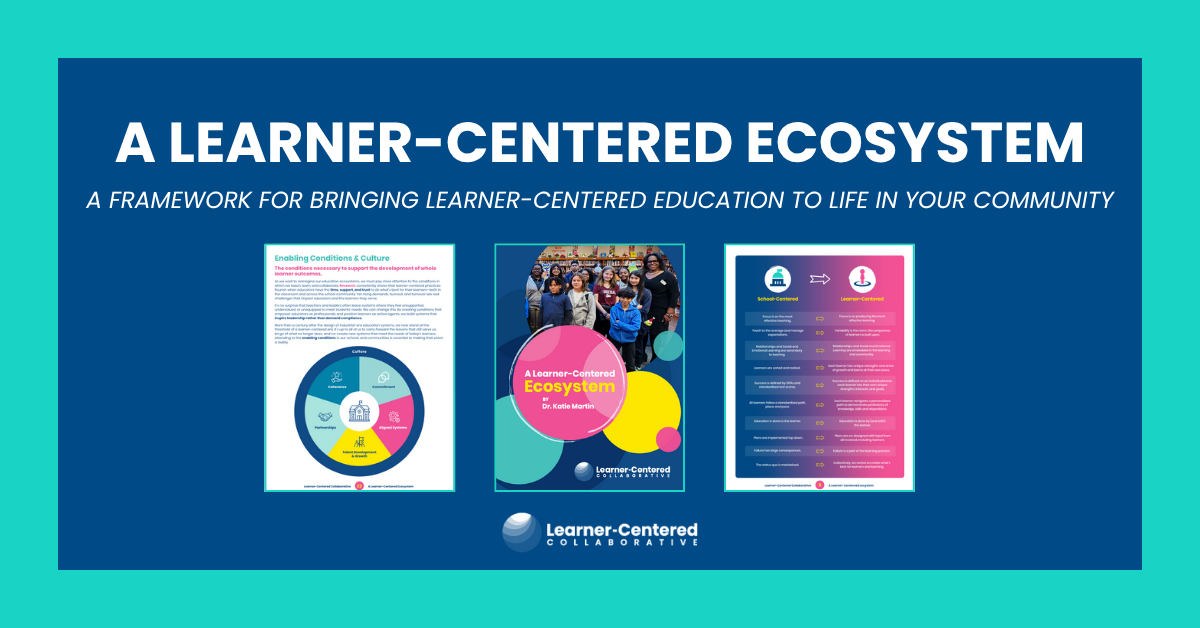Building Community Partnerships: A Strategy for Sustaining Learner-Centered Education
Written by Danielle Delrosario
Danielle DelRosario is a Community Schools/MTSS Specialist in Escondido Union School District and member of our inaugural LC Innovator cohort, where learner-centered educators come together to share bright spots and ideas around innovative practices

The current research on community partnerships in education indicates tremendous benefits for students, namely: enhanced social-emotional skill development, increased student engagement, and improved academic outcomes (Sepanik and Brown, RWJF Partnerships Brief 2021). As educators, these are some of the most profound benefits we seek to bring to our learners. As a former classroom teacher and instructional coach, I’ve seen firsthand how districts and classrooms that foster community partnerships not only enrich learning but also create a stronger sense of connection and motivation for students and community members. Over time, these partnerships transform schools from traditional learning spaces into hubs of shared investment, where the local community actively participates in student success. This shift benefits everyone: students feel valued by their community, and teachers gain sustainable resources for creating meaningful, engaging learning experiences.
When we forge partnerships with our local community, we expand learning and assessment beyond the classroom. These connections tap into an organic network of resources that provide real-world contexts where students can develop and demonstrate lasting competencies. One consistent lesson from my work as a teacher and instructional leader is that communities are eager to invest in their local schools—they’re just waiting for an invitation!
Start Small and Get Strategic
For those new to developing community partnerships, starting small and local can be an effective first step. While “community” often brings to mind local businesses or nonprofits, it also exists within our own schools. When my 7th grade English Language Arts (ELA) team wanted to create an authentic audience for our end-of-year capstone projects, we began by inviting parents, families, and guardians. This felt like an accessible and meaningful audience for our students, who shared their growth and accomplishments with those who supported them along the way.

Sometimes, community partners come to you, and the key becomes strategically centering students in these connections. Recently, a parent approached our middle school about creating a food pantry for families in need. With her connections to a food distribution resource, she had both the means and desire to address a need we had identified through our schoolwide needs assessment.
During our initial brainstorming session together, we explored key questions:
- How can students participate meaningfully in this effort?
- What authentic learning opportunities will their involvement create?
- Which skills or competencies might they develop through this work?
These questions formed our thinking during our first partnership meeting. Through strategic thinking, the partnership has the potential to grow into an exciting community service opportunity that centers student learning and growth.

Ready to identify local resources? Our Community Asset Map tool helps you map and leverage community connections
Identify and Communicate Mutual Benefits
As partnerships evolve, you may find ways to expand your reach and connect students with new audiences. Building on our success with family presentations, when I moved to teach 8th grade, we expanded our audience strategy. While our 7th grade students had presented their portfolios to families, we wanted to give our 8th graders a chance to connect with their future high school community. We invited local high school students to serve as the audience for these presentations, creating an opportunity for our students to demonstrate their readiness for high school while connecting with future peers. Many of our 8th graders had siblings at the high school, providing a built-in network of volunteers. Eighth-grade students authentically applied their persuasive skills to recruit high school volunteers, who earned community service hours by participating. Talk about real-world application of ELA competencies like persuasion and communication!
This experience highlighted the importance of emphasizing mutual benefits when building partnerships. The high school volunteers fulfilled their service requirements while making a meaningful impact on their future peers. By promoting these mutual benefits, we attract partners who see the value in fostering educational connections. Community partnerships can transform students’ experiences, but they thrive when all stakeholders align in their goals and invest in the success of the partnership.
Explore more partnership strategies in our blogs 6 Pillars to Prioritizing Community and Relationships and Beyond the Classroom
Let Your Why Drive Your Partnership Work
Building partnerships works best when aligned with clear outcomes for students. Early on as a teacher, I invited guest authors to class, hoping to provide real-world connections that would motivate my students. However, the novelty of a guest author did not prove to motivate my students as I had hoped. Reflecting back, I would have integrated guest authors more intentionally by connecting the author’s writing styles, genres, or techniques to specific writing skills we were developing in our units.
Consider these guiding questions when developing partnerships:
- Will the partner help students build essential background knowledge or skills?
- Does the partnership offer insights into potential career pathways?
- How might this collaboration provide authentic audiences for student work?
- What opportunities exist for enrichment in areas like creative writing, STEM, or social activism?
Community partnerships expand learning beyond traditional academics, supporting the development of whole-learner outcomes. At my middle school, we partner with a local martial arts program offering non-contact boxing after school– an initiative suggested by our counseling team after noticing some students used physical or verbal aggression as a form of communication. By giving students a positive outlet, we support their social-emotional development and address behavioral challenges. Our students are developing an essential set of skills like self-management and awareness, teamwork, and persistence as a result of this partnership- all skills essential for success in the world. We hope these supports will organically enhance academic engagement as students build self-confidence and self-leadership skills. Whether a partnership offers academic enrichment or non-academic support, its impact grows stronger when clearly aligned with students’ needs, interests, and specific outcomes.

Sharing Success Together
Ready to explore community partnerships? Here are three steps to begin:
- Map your school community’s existing connections and resources
- Identify one specific student need or learning goal that a partnership could address
- Start small with a pilot project that can grow organically
Whether collaborating with families, local students, or local vendors, each community’s organic network offers immense potential for supporting real-world learning experiences. These partnerships build lasting connections between schools and their communities, providing sustainable ways for educators to make learning as meaningful as possible. When communities invest in education, students thrive, and everyone involved contributes to a shared vision of success.
Ready to build meaningful partnerships in your community? Start with our Community Asset Map tool, explore our Learner-Centered Ecosystem page, and get inspired by real examples in Devin Vodicka’s Beyond the Classroom blog.
References
Sepanik, S., & Brown, K. T., Jr. (2021, November). School-community partnerships. MDRC. https://www.mdrc.org/sites/default/files/RWJF_Partnerships_Brief_0.pdf




